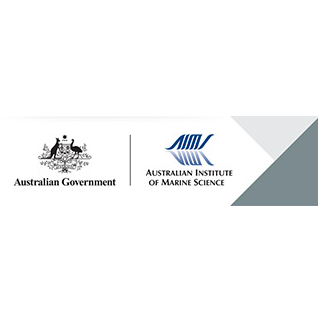Full description
A total of 1737 Pinctada maxima samples were collected from eight distinct populations, six in Australia and two in Indonesia. The Australian populations were sampled from Darwin in the Northern Territory and the Lacepede Islands, 80 Mile Beach - shallow water, 80 Mile Beach - deep water, Port Hedland and Exmouth Gulf in Western Australia. The Indonesian populations were sampled from Madura Island and Sumbawa Island.Samples of both adductor muscle and mantle tissue were collected from Pinctada maxima oysters of various sizes aboard pearling industry vessels in Western Australia and the Northern Territory, between February 1998 and November 1999. Whole shell samples from the Indonesian sites, collected in November 1999, were delivered by road to Gondol Fisheries Station and held in flowing sea water tanks prior to dissection. The entire soft tissues from small spat were removed from the shell. Samples were either snap frozen in liquid nitrogen or preserved in 70% ethanol immediately following collection.Assays were developed for eight highly variable microsatellites markers and an mtDNA marker for rapid assessment of genetic variation in pearl oysters. These assays were used to screen the eight populations of P. maxima (including different juvenile age classes for the Western Australian and Northern Territory populations). It was demonstrated that the Western Australian populations belong to one stock with large effective population sizes and have little or no recruitment from Indonesia and a reasonable degree of exchange with Northern Territory. A basic technology for assessment of genetic variation in spat and for future use in improving cultured pearl oyster stocks was developed.Successful description of the population genetic structure for different age classes of Pinctada maxima in Western Australia and Northern Territory has provided a basis for improved maintenance of a productive and valuable fishery through improved stock definition and determination of levels of dispersal among populations. The development of highly variable DNA markers provides a base technology to assist the choice of sources of broodstock for hatcheries and future management of cultured populations as the Pearling Industry increasingly relies on hatchery produced spat.The objectives of this research were:1. To develop assays for regions of highly variable DNA (microsatellites) and mtDNA markers for rapid assessment of genetic variation in pearl oysters.2. To survey up to eight populations of P. maxima throughout the Western Australian coast, including different juvenile age classes, using up to ten highly variable markers.3. To infer the level of dispersal between populations and the effective population size contributing to the next generation from the genetic data and identify the management implications of these data.4. To develop the basic technology for assessment of genetic variation in spat and for future use in improving cultured pearl oyster stocks.
Initially two sites were collected in each of 80 Mile shallow and 80 Mile deep populations. The 80 Mile shallow collections were made almost continuously between ten and eighteen mile beach and the subsets were fused into one sample. The 80 Mile deep collections were made from Cape Bossut and Compass Rose sites, the latter being more offshore than the former. These two sites showed no significant microsatellite frequency differences and were also fused.In 1998, samples were collected from Australian waters only and consisted of animals from three different year classes defined by dorso-ventral shell length, 0+ spat (1-60mm), 1+ spat (61- 120mm) and adults (>120 mm). In 1999 a second set of 0+ and 1+ spat were collected from four of the Western Australian populations (the Lacepede Islands, 80 Mile Beach, Port Hedland and Exmouth Gulf) to allow a comparison of gene frequencies for a single cohort over two successive years.
Lineage
Maintenance and Update Frequency: notPlannedNotes
CreditBenzie, John AH, Dr (Principal Investigator)
Ballment, Elizabeth R (Beth), Ms (Custodian)
Modified: 22 08 2025
text: westlimit=113.0; southlimit=-22.0; eastlimit=131.0; northlimit=-7.1
Mitochondrial DNA reveals genetic differentiation between Australian and Indonesian pearl oyster Pinctada maxima (Jameson 1901) populations: Benzie JAH, Smith C and Sugama K (2003) Mitochondrial DNA reveals genetic differentiation between Australian and Indonesian pearl oyster Pinctada maxima (Jameson 1901) populations. Journal of Shellfish Research 22: 781-787.
local : articleId=6693
Microsatellite and mitochondrial genetic markers for silver lipped pearl oyster Pinctada maxima. AIMS Report No: Smith C, Benzie JAH and Wilson KJ (2003) Microsatellite and mitochondrial genetic markers for silver lipped pearl oyster Pinctada maxima. AIMS Report No. 34. Australian Institute of Marine Science. 29 p.
local : articleId=6535
Isolation and characterization of eight microsatellite loci from silver-lipped pearl oyster Pinctada maxima: Smith C, Benzie JAH and Wilson KJ (2003) Isolation and characterization of eight microsatellite loci from silver-lipped pearl oyster Pinctada maxima. Molecular Ecology Notes 3: 125-127.
local : articleId=6415
Pearl oyster genetics. FRDC Project 97/344: Benzie JAH and Smith C (2002) Pearl oyster genetics. FRDC Project 97/344. FRDC Project 97/344. Australian Institute of Marine Science. 112 p.
local : articleId=6365
Pearl oyster (Pinctada maxima) genetic variation in Western Australia: Benzie JAH, Smith C and Wilson KJ (1999) Pearl oyster (Pinctada maxima) genetic variation in Western Australia. p. 69. In: World Aquaculture '99: bridging the gap. The Annual International Conference and Exposition of the World Aquaculture Society 26 April-2 May 1999, Sydney, Australia. World Aquaculture Society.
local : articleId=6814
- global : 0442b640-6714-11dc-9280-00008a07204e


